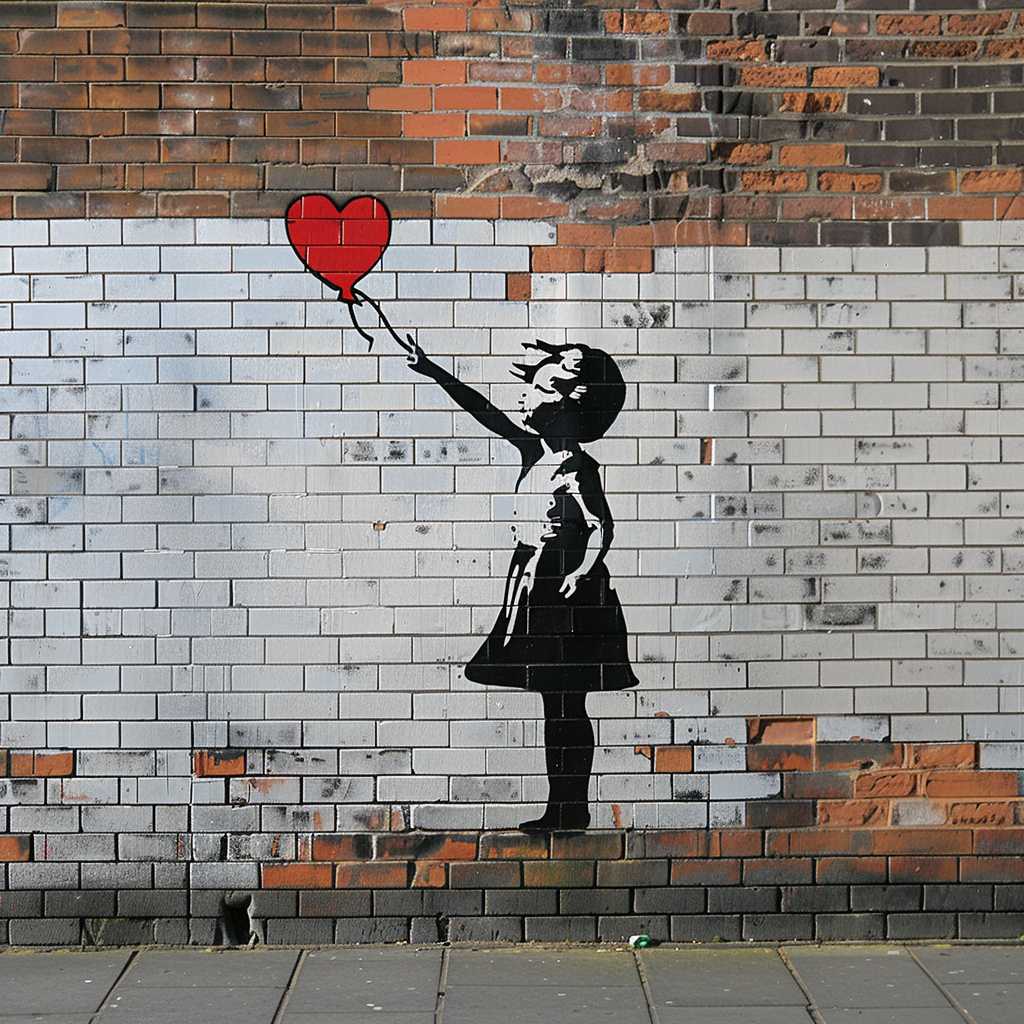The Enigma of Banksy: Unraveling the Mystery of the World’s Most Famous Street Artist
Banksy, a pseudonymous England-based street artist, political activist, and film director, stands as a figure emblematic of contemporary guerrilla artistry. His distinctive stenciling technique, often combined with bold satirical messages, has captivated the public and stirred debate across the globe. Yet, despite his fame, Banksy’s identity remains shrouded in mystery, a deliberate choice that keeps the focus on his art rather than his persona.
Origins and Rise to Fame
Early Works and Anonymity
Banksy’s career can be traced to the underground scene in Bristol in the early 1990s, where he began as a freehand graffiti artist. Among his earliest works were murals that showcased a unique fusion of dark humor with graffiti done in a distinctive stenciling technique. His avoidance of the limelight created a veil of anonymity which has never been lifted, sparking curiosity about his identity and adding to his allure.
Notable Techniques and Aesthetic Approach
His art is often characterized by striking images paired with slogans. The use of stencils is practical—it enables quick execution, which is an invaluable advantage in an activity that is typically illegal and conducted under the constant threat of arrest or public confrontation. Moreover, the sharp lines and bold contrast offered by stenciling contribute to the visual impact of his work.
Global Recognition and Critical Acclaim
Banksy’s reputation soared in the early 2000s when his works began appearing in London and soon after, in cities around the world. He gained international acclaim for works like ‘Girl with Balloon’, ‘The Flower Thrower’, and ‘There is Always Hope’. Not confining himself to public walls, Banksy’s artistic endeavors have extended into theme parks with Dismaland—a temporary subversive theme park described as a “family theme park unsuitable for children.”
Controversial Endeavors and Artistic Impact
Street Art versus Vandalism
Banksy’s works often bring to light relevant topics such as anti-capitalism, anti-imperialism, and anti-authoritarianism. While many herald him as a hero of modern expression against social injustices, some criticize his work as vandalism. Regardless of one’s stance, it’s undeniable that Banksy has challenged traditional conceptions of public space use and art ownership.
Art in Conflict Zones
Banksy does not shy away from installing artworks in locations suffering from political strife or social unrest. Notable examples include his pieces on the West Bank barrier, confronting issues of oppression and conflict. His artwork unsettles accepted norms and provokes discussions on international issues bringing them into mainstream consciousness.
Commercial Success Amidst Anti-Capitalist Themes
Despite his anti-establishment tenets, Banksy’s work commands high prices at auctions. Authentic pieces can fetch millions; for example, the partial shredding of his artwork “Girl with Balloon” at auction was another instance that caused a stir in the art community—questioning authenticity, ownership, and value of street art.
Legal Battles and Mockumentary Explorations
Trademark Disputes and Authentications
As Banksy’s popularity grows, so does the number of fakes surfacing in the market. The artist counters illegitimate reproductions by authenticating through Pest Control—a handling service acting on behalf of Banksy. In addition, there have been numerous legal battles fought over the copyright and resale rights of his public works.
Film Contributions: ‘Exit Through The Gift Shop’
Banksy’s foray into filmmaking resulted in ‘Exit Through The Gift Shop,’ a documentary which questions what is authentic within both art and life itself. It provides an insight (albeit a possibly satirical one) into Banksy’s world view transferring his artwork critiques onto film.
Notes
Image Description:
The appropriate accompanying image might depict one of Banksy’s iconic pieces such as ‘Girl With Balloon’, showcasing a young girl reaching out toward a red heart-shaped balloon. It would capture not only Banksy’s distinctive black-and-white stencil style but also include part of the surrounding brick wall to convey the gritty urban context typical of his work. Alternatively, an image demonstrating crowds viewing a contested piece may illustrate both popularity and contention surrounding street art.
